Why Belgian vets are saying yes to objective gait analysis
Top Belgian equine veterinarians are clear: Objective gait analysis is becoming as essential as X-rays.
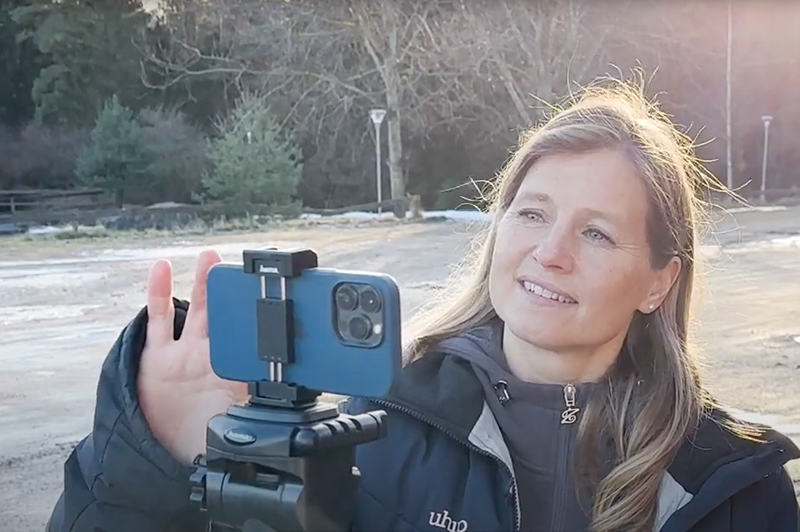
Objective gait analysis is becoming part of everyday practice in equine clinics worldwide. But for it to truly benefit horses and their welfare, technology alone is not enough. You need to understand how to interpret the data it returns, and what it means in relation to what you see and feel in the horse.
We spoke to biomechanics researchers and expert educators Marie Rhodin and Emma Persson-Sjödin, who have both played key roles in developing the use of data to support decisions on horse health.
Marie: My interest began after completing my PhD research on equine biomechanics. When I transitioned into orthopaedic work at the clinic, I wanted to deepen my understanding of lameness evaluations—such a fundamental part of our clinical practice. I kept asking myself: What are we actually seeing? How do we interpret it? And what might we be missing? It quickly became clear that technology could help us objectively measure movement and reveal patterns that might be invisible to the naked eye.

Marie Rhodin helping other veterinarians to interpret data better, Objective gait analysis course for equine veterinarians, Uppsala, Kattis Ridcenter, March 2025
Emma: For me, it started when I was a final year vet student and wrote my master thesis on the subject and then really took off during the following years when I combined PhD research on the interpretation of objective gait analysis with clinical orthopaedic work. I saw the potential of combining what we see clinically with data. It’s not a question of one or the other – objective analysis helps us build a clearer, more complete picture of the horse.

Emma Persson-Sjödin talking about the difference in forces, Objective gait analysis course for equine veterinarians, Uppsala, Kattis Ridcenter, March 2025
Emma: The ability to track changes over time is a big one – it gives us more reliable information, both for diagnosis and when monitoring treatment. That’s especially important with subtle or low-grade lameness cases. The other big advantage is all the mistakes we can avoid in our clinical decision-making. Such as over- or underestimating the effect of a block or confusing a compensatory asymmetry, such as a head nod in a hindlimb lame horse, for a primary lameness.
Marie: One of the main advantages is the ability to more accurately assess a horse’s movement pattern, identify the lame leg, and evaluate the effects of diagnostic analgesia when investigating orthopaedic issues. We know that around 70% of horses in training show some degree of asymmetry. By collecting longitudinal motion data, we can better interpret the clinical significance of these asymmetries. Understanding how they change over time—with training, rest, or continued work—provides valuable insights. It helps us determine whether we’re looking at an early sign of lameness, a long-standing issue, or something less clinically relevant. A movement history offers crucial context that makes assessments far more informed.
We also see that many horses change noticeably during a lameness exam, even without interventions, becoming more or less lame after lunging or warming up. Without clear, objective measurements before and after each step, it's easy to misjudge. Having those values helps reduce error and improves diagnostic accuracy.
I also find it improves communication with owners and trainers. When we have data to refer to, we start from a shared baseline. This builds trust and helps everyone understand what’s going on.
Marie: One of the biggest challenges is interpreting what motion asymmetries actually mean. Our studies on horses in full training have shown that many horses display some level of asymmetry, even without clinical issues. So, the key difficulty is knowing when an asymmetry signals a real problem—and when it’s just part of the horse’s normal motion pattern.
Emma: I agree with Marie, and from educating others to use these systems, I’ve noticed a common hurdle is just getting past the initial learning curve. At first, the data can seem confusing or counterintuitive. Plus, in a busy clinic, it might feel like an extra step. That’s why we see value in short, practically focused courses—they help users get over that first bump, so the system starts making sense and becomes a useful, time-efficient tool.
Emma: The challenge with multi-limb lameness is that different asymmetries overlap, creating complex and sometimes misleading patterns. These layers can make it difficult to identify where to begin. The key is to start blocking the limb you’re most confident is a primary source of lameness. If you begin with a compensatory limb, no amount of blocking will resolve the issue.
Marie: We’re currently researching this by analyzing clinical cases in our database to understand how multi-limb lameness presents. Like Emma said, it’s crucial to identify and address the primary problem first.
Marie: Absolutely – if used uncritically or without understanding what the numbers mean. Technology is a tool, not a judge. It’s still up to the vet to interpret the results in light of the clinical exam and the horse’s overall picture.
Emma: I agree. The key is to use it as support, not as a substitute for clinical judgment. That means really understanding how the system works and how to interpret the data in context. That said, I wouldn’t recommend doing a lameness evaluation without using an objective gait analysis system. It significantly improves accuracy - you’re less likely to miss subtle issues or draw the wrong conclusions. It’s much like using ultrasound for a tendon injury - you wouldn’t rely on palpation alone. While clinical observation is still essential, these systems add a crucial layer of objectivity and help reduce diagnostic errors.
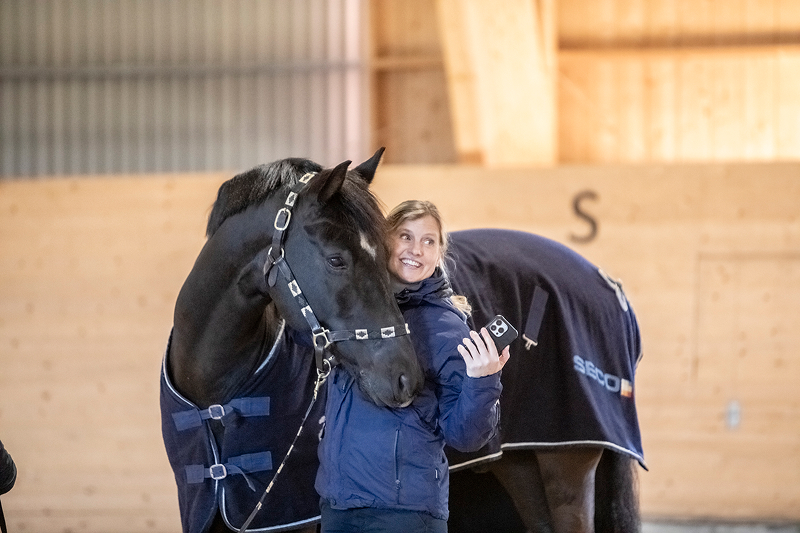
Emma: I think it’s heading that way, yes. But it also requires education and a willingness to adapt how we work. It’s not just about buying a system – you have to know how to use it well.
Marie: It reminds me of when ultrasound became standard practice – no one questions why we use ultrasound during a lameness work-up today. I think we’ll see the same development here. But like with all new tools, adoption happens at different speeds in different places.
Marie: Objective gait analysis is superior to veterinarians´ subjective assessment in identifying the lame leg and distinguish between types of lameness (impact vs push-off), as well as evaluating the effect of nerve blocks or treatment. Remember that each measurement is just one piece of the puzzle and interpretation must always be done in context. It helps to train your own interpretation skills and to share and discuss results with colleagues. Technology isn’t meant to replace the clinical eye – it’s meant to sharpen it.
Emma: And don’t be afraid to begin. It doesn’t have to be perfect right away. The technology is evolving all the time – and so are we. I see it as a brilliant opportunity to learn more about how horses really move.
Marie: It means we’re better at catching problems early and making more precise decisions. That leads to less suffering, more targeted treatments and training and healthier, more sustainable horses.
Emma: And it means we can listen more closely to the horse – truly listen. Because movement tells us how the horse is feeling.
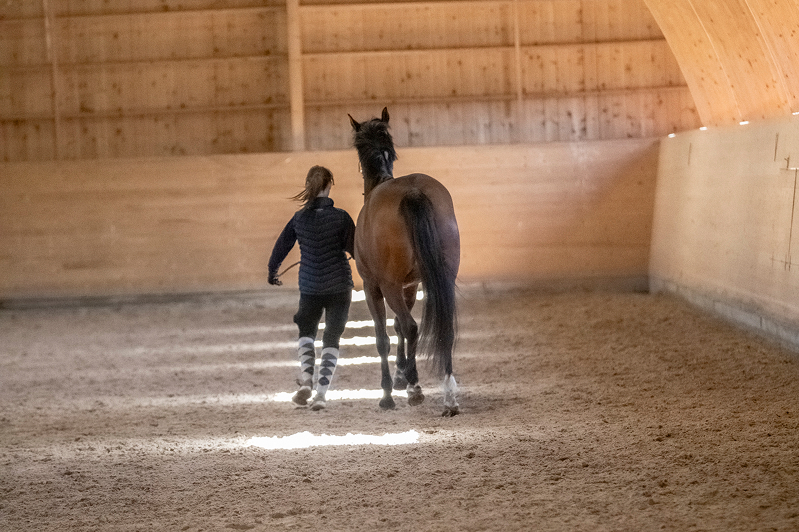
As this conversation shows, objective gait analysis is not about replacing clinical skill - it’s about refining it. The future of lameness diagnostics isn’t just more advanced - it’s more attentive. And that shift benefits everyone involved, most of all the horses.
Together, Emma and Marie have developed courses in objective gait analysis to meet the growing demand from veterinarians and equine professionals seeking to use motion analysis technology more effectively. Initially designed to help veterinarians build confidence in interpreting motion data and applying it in everyday diagnostics, the course has since expanded. In 2025, they launched a new edition tailored to equine professionals such as physiotherapists, farriers, and trainers.
Emma is a veterinarian and researcher at the Swedish University of Agricultural Sciences, where she focuses her research on applying and interpreting objective gait analysis in clinical settings. Clinically, she works with orthopaedic cases and also teaches equine anatomy. Her research includes how lameness presents on the lunge and how gait analysis applies to complex breeds like Icelandic horses.

“It’s a brilliant opportunity to learn how horses really move.” – Emma Persson Sjödin
Marie is a veterinarian and senior researcher known for her work in equine gait analysis. With a background in both clinical orthopaedics and competitive dressage, she has led research on head and neck positions, gaited horses, and complex lameness cases.

“More data doesn´t automatically mean better outcomes. We need to educate both professionals and horse owners on how to use it wisely.” - Marie Rhodin
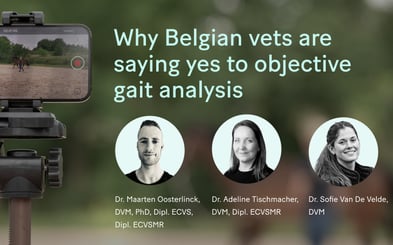
Top Belgian equine veterinarians are clear: Objective gait analysis is becoming as essential as X-rays.
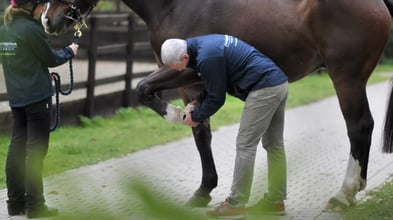
Giorgio Ricardi of Donnington Grove Equine Vets reveals how data-driven gait analysis enhances clinical decisions in complex lameness cases.
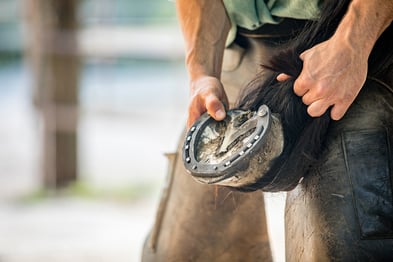
We sat down with UK Master Farrier Marc Jerram, who blends traditional skill with modern gait analysis to spot issues early and collaborate with vets on targeted solutions.